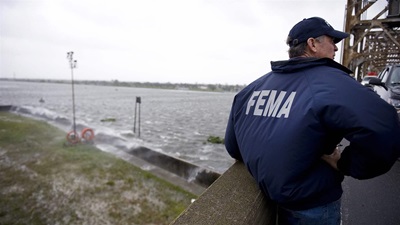Big Cities Face Deficits: Should States Worry?
At least 20 of the nation’s 25 largest cities must close budget gaps

Fiscal stress in the U.S.’ largest cities is widespread. In a five-month span from December 2024 to April 2025, Chicago, Los Angeles, San Francisco, and Washington all experienced credit rating downgrades. And while these cities have grabbed most of the headlines for the unique setbacks they have faced—wildfires in Los Angeles and federal cuts in Washington, for example—a diverse mix of cities that includes Dallas; Denver; Houston; and Jacksonville, Florida, also face daunting budget challenges.
Since January, at least 20 of the nation’s 25 most populous cities have reported budget gaps for fiscal year 2026—and often beyond—based on a review by The Pew Charitable Trusts of news reports, budget documents, and communications with city officials.
To better understand the causes of these challenges, their severity, and their likelihood of lingering, Pew researchers interviewed national experts, fiscal watchdogs, and city officials. Although the COVID-19 pandemic triggered a serious economic and demographic shock to big cities, the interviews suggest that the budget problems cannot be attributed to an abrupt reversal of fortunes in 2020.
Instead, big cities are suffering from many of the same maladies as other state and local governments: rising costs, revenue sources struggling to keep up, reduced federal support, and increased fiscal and economic uncertainty. As these challenges build, city leaders are beginning to turn to state officials for funding and financial flexibility, but how much help will be forthcoming is an open question: Many states are struggling with their own budget deficits.
Growing imbalances
It could be worse. Fifty years ago, when New York City came within hours of bankruptcy, cities’ fiscal health and economic vitality had reached a nadir. The October 1975 financial crisis in the largest U.S. city was emblematic of widespread urban woes that started in the 1950s and accelerated in the ’60s and ’70s. A spate of problems—deindustrialization, crime, corruption, racial strife, white flight, federal cuts, and budget deficits—compounded one another. Based on measures such as population growth and homicide rates, many cities didn’t begin to regain momentum until the 1990s.
When the pandemic began, many observers feared a similar downward spiral. So far, though, the worst fears haven’t come to pass. Many large cities lost population, but almost all were growing again by 2024. Crime rates spiked, but then fell. And, although office building vacancies remain historically high—a consequence of the enduring rise of remote and hybrid work—the budgetary effects have been relatively muted, except in a few cities such as San Francisco.
For example, Boston depends more on commercial property taxes than any other big city and existing commercial property values fell in the most recent round of assessments as a result of office vacancies. However, residential property values increased and the city continued to benefit from new development. Even though commercial values are likely to fall further, rating agencies in 2025 reaffirmed Boston’s AAA bond rating for a 12th consecutive year. “We feel fortunate the city is in really good shape,” Ashley Groffenberger, Boston’s chief financial officer, told Pew. “If we focus on constraining expenditure growth, we will weather whatever is happening out there.”
Instead of instigating fiscal crises, the pandemic era offered cities a temporary reprieve—one that is now over. Cities received tens of billions of dollars in flexible federal aid, but that money is mostly spent. Revenue growth from economically sensitive taxes such as income and sales taxes surged in 2022 and 2023 but has since normalized. Dallas, for example, enjoyed 15% annual sales tax growth in fiscal 2022 but has since reverted to a more historically typical 4% to 5%. While healthy, that growth may not be enough to pay for new demands on spending. For example, a November 2024 ballot measure requires the city to hire roughly 900 new police officers. Nationwide, high inflation and competition for workers has meant that costs—especially to compensate city personnel, pay retirement benefits, and contract for services—continue to grow.
Cities face new risks
These imbalances between ongoing revenue and spending create long-term budget problems. Many big cities that produce multiyear budget projections—such as Houston, Jacksonville, New York, and San Diego—show deficits throughout the forecast period. Federal policy changes and economic weaknesses could add to the fiscal pressure.
How much money cities receive directly from the federal government—and therefore how directly vulnerable they are to potential federal cuts—varies. For example, cities such as Boston and New York run the local school system and depend on federal dollars from programs such as Title 1, while many others have independent school districts. Today, some are also in legal battles with the Trump administration over promised funds, such as fights from Chicago, Denver, and New York to retain Federal Emergency Management Agency dollars used to house asylum seekers. In general, though, cities—unlike states—do not routinely receive massive tranches of dollars directly from the federal government or jointly fund major programs such as Medicaid.
Instead, interviewees were more likely to cite indirect risk: Federal policies could undermine key pillars of local economies and revenue systems. For example, many cities have sought to revitalize themselves through what is known as an “eds and meds” economic model, but federal cuts to Medicaid and research grants could threaten strategies that depend on thriving hospitals and higher education institutions. Likewise, cities that depend on international migration or international tourism face fiscal pressure. When Las Vegas announced a budget deficit in April, city officials attributed it partially to weaknesses in revenue sources tied to international tourism, which has declined nationally this year amid increased global tensions.
Importance of reserves
Among cities’ greatest strengths as they confront these challenges are their budget reserves. Just like states, cities used temporary federal aid and favorable fiscal conditions in the pandemic and post-pandemic period to boost savings. Sarah Sullivant, a managing director with S&P Global Ratings, said coming into the year median budget reserves were 45% of general fund revenue in the municipalities and counties that S&P rates, a historically high number.
“It’s important to note that cities large and small entered 2025 with very strong reserve positions,” Sullivant told Pew. “What we think is that is going to help them manage through this current period of revenue weakness and the economic slowdown.”
Relying on reserves, however, is not a long-term solution to structural budget imbalances. In some cities, savings are already dwindling, leading to deeper budget problems. For example, Denver’s rainy day fund balance has fallen to about 11% of spending—below the city’s 15% target—as the city has leaned on reserves to pay for operating expenses. In May, facing a $200 million budget gap for fiscal 2026, Mayor Mike Johnston ordered a hiring freeze and for many workers to take between two and seven furlough days through the end of the year.
Similarly, Houston City Controller Chris Hollins has warned that the city’s shrinking reserves risk a credit downgrade. The rating agencies put the city on a negative watch after a 2024 legal settlement provided firefighters with back pay and wage increases. Hollins told Pew that Houston has long relied on one-time money—such as pandemic aid or disaster relief—to pay for ongoing expenses. Projections from the Houston finance department show that, even under optimistic scenarios, the city is expected to face deficits in the hundreds of millions of dollars over the next five years.
“Our budget is not structurally balanced and it has not been for some time,” Hollins said, “but that has gotten worse recently.”
What is the state role?
State governments generally set the terms under which cities operate, including what taxes they are allowed to levy and what services they are responsible for providing. And state’s own budget actions often contribute to big cities’ fiscal problems.
Much of Phoenix’s fiscal 2026 budget deficit stemmed from state tax cuts that reduced local revenue, including state-level income-tax cuts and the repeal of a tax on residential rents. In March, Phoenix’s City Council raised the local sales tax to compensate. Similarly, New York City is hiring thousands of teachers to try to comply with a 2022 state law limiting school class sizes. When fully phased in, the city comptroller estimates the mandate will cost more than $1 billion annually, adding to the city’s multibillion dollar annual deficits. Nationally, a new spate of state-imposed property-tax limits could further restrict local flexibility.
Cities have also had little success convincing state leaders to provide help as local challenges become more acute. Last year, Illinois Governor JB Pritzker firmly rejected Chicago Mayor Brandon Johnson’s request for more than $1 billion in additional funds for the city’s school system, which is facing a significant fiscal crisis. California provided funding to help Los Angeles rebuild after the January fires, but Governor Gavin Newsom has resisted calls from Mayor Karen Bass for broader state support. The budget that lawmakers enacted in June omitted much of what Bass and area state legislators requested, but allows the state to offer up to $1 billion in loans to Los Angeles-area governments affected by the fires.
These examples may be an early sign that history is repeating: States tend to address their own fiscal challenges in part by limiting support for local governments. For example, state cuts during the 2007-09 Great Recession disproportionately targeted aid to localities. Furthermore, other local governments, including many transit agencies and school districts, are in even worse shape than major cities, creating multiple demands for limited state support.
“States are going to balance their budgets,” Howard Cure, director of municipal bond research for Evercore Wealth Management, told Pew. “They’re going to have to make some tough decisions, and it could be on the backs of cities.”
Final thoughts
Despite these challenges, cities are resilient. As Cure noted, no city proves that point more than New York—which bounced back not only from the 1975 fiscal crisis, but also the 9/11 terrorist attacks, the financial industry crisis of the Great Recession, and the COVID-19 pandemic.
The question is not whether cities will address the deficits—by law, they must—but whether they are an early sign of longer-lasting fiscal, economic, and demographic headwinds that cities could struggle to recover from quickly or easily. That matters not only for the cities themselves and their residents, but also for states. In many cases, big cities drive state economies, play a central role in their revenue collections, and help define the state’s national and international image. Severe local fiscal stress can also require costly state interventions.
At a time when many states face their own deficits, they may have limited capacity to provide new funding for cities. What they can do, though, is give cities the flexibility they need to make revenue and spending decisions, so that they can solve their own problems.
Josh Goodman works on The Pew Charitable Trusts’ state fiscal health project.









